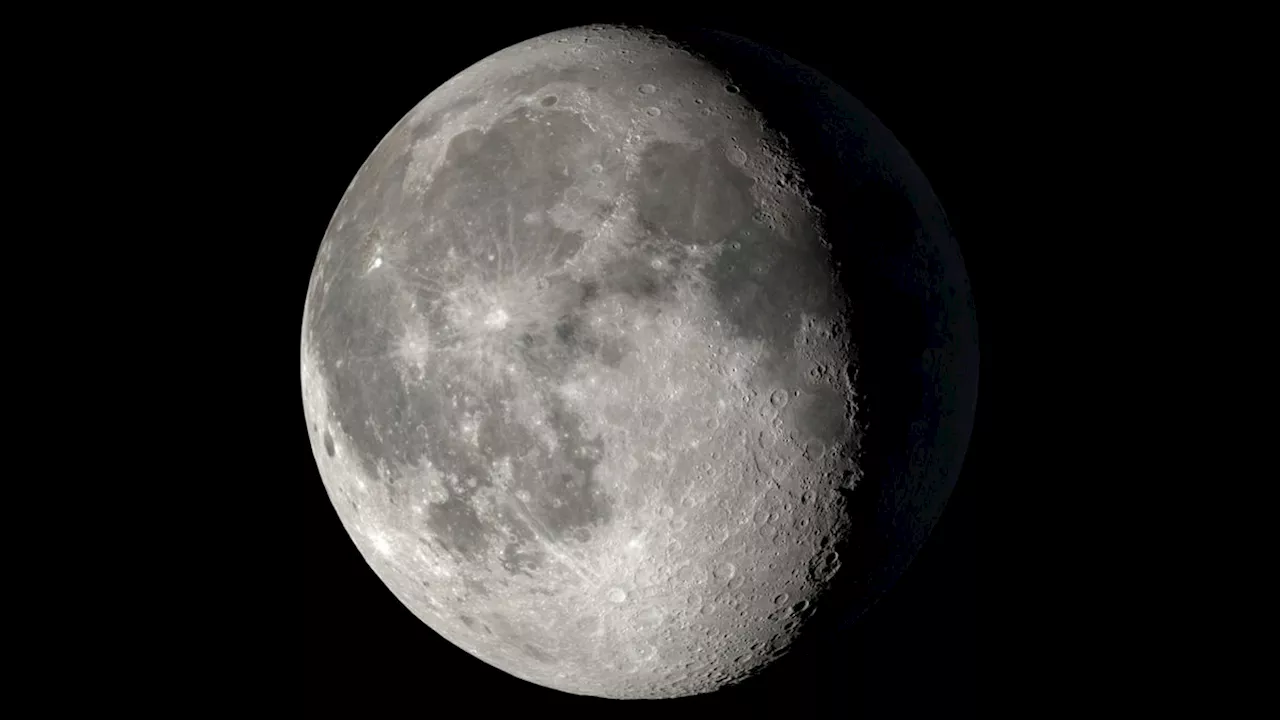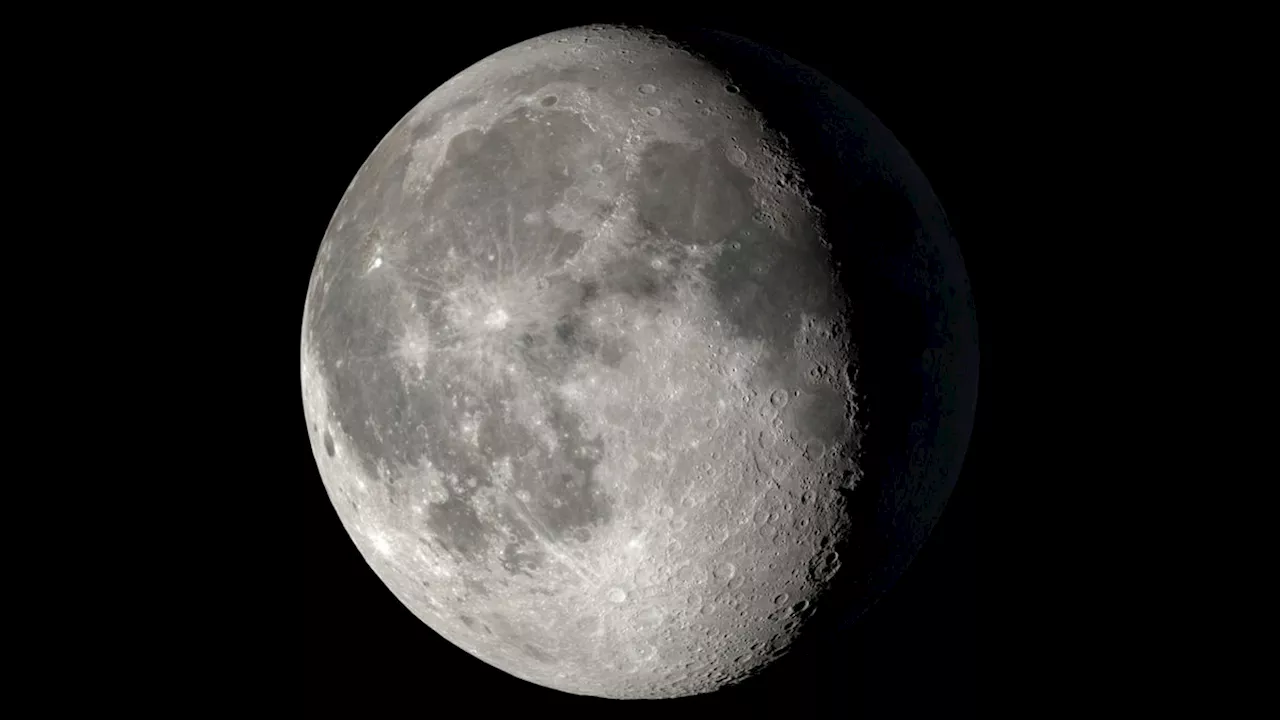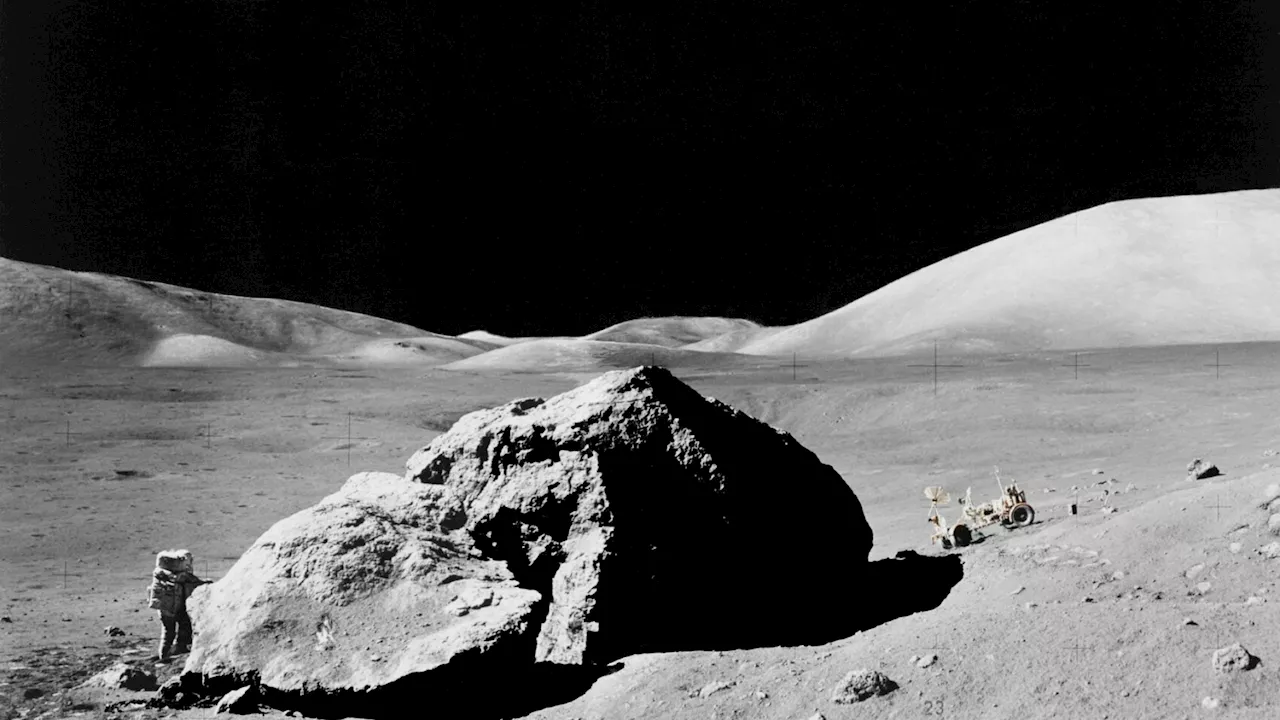Analysis of lunar rocks from China's Chang’e-5 mission indicates that the moon's magnetic field persisted for a longer duration than previously thought, offering valuable insights into planetary evolution and the potential for habitability.
Lunar rocks retrieved by China’s Chang’e-5 mission reveal that the moon’s magnetic field lasted much longer than scientists previously thought, offering new perspectives on planetary evolution and habitability.By studying tiny rocks brought back by the Chang’e-5 mission, they found the moon’s magnetic field measured two to four microteslas about two billion years ago, less than 10% of Earth’s current surface field.
findings published Ross Mitchell from the Institute of Geology and Geophysics in Beijing explained that the moon’s magnetic field persisted much longer than previously believed. The study suggests the weak but enduring magnetic field was likely driven by internal processes such as the crystallization of the moon’s core or core-mantle interactions, according to planetary scientist Benjamin Weiss from MIT, who was not part of the research. These processes likely sustained the moon’s magnetic engine, known as the lunar dynamo, for billions of years. Weiss noted that the findings align with the Chang’e missions’ symbolic connection to the moon goddess, who is associated with immortality in Chinese mythology, Now, the findings suggest that the moon’s persistent magnetic field could have shielded its surface from solar radiation and helped retain volatile compounds like water. This deeper understanding of the moon’s magnetic history provides crucial insights into planetary habitability and evolution. missions indicated that over three billion years ago, the moon’s magnetic field was as strong as Earth’s current field, which ranges from 25 to 65 microteslas., reported that about 2.8 billion years ago, the moon’s magnetic field measured between five and 21 microteslas. However, the duration of the lunar dynamo remains uncertain. Studying Apollo samples to answer this question has been difficult due to their older age, large iron grains that poorly preserve magnetic signals, and other challenges, according to Weiss. In contrast, the 1.73kg (
LUNAR MAGNETIC FIELD CHANG'e-5 MISSION PLANETARY EVOLUTION HABITABILITY SPACE EXPLORATION
United States Latest News, United States Headlines
Similar News:You can also read news stories similar to this one that we have collected from other news sources.
 Lost Lunar Legacy: Ireland's Apollo 11 Moon Rocks Burned in 1977 FireNew documents reveal the journey of Ireland's Apollo 11 moon rock display before its tragic destruction in a 1977 fire. The display, gifted by the U.S. in 1970, was housed at Dunsink Observatory in Dublin.
Lost Lunar Legacy: Ireland's Apollo 11 Moon Rocks Burned in 1977 FireNew documents reveal the journey of Ireland's Apollo 11 moon rock display before its tragic destruction in a 1977 fire. The display, gifted by the U.S. in 1970, was housed at Dunsink Observatory in Dublin.
Read more »
 University of Illinois Students Propose Lunar Infrastructure Module for Sustained Lunar ExplorationA group of students at the University of Illinois Urbana-Champaign have proposed a lunar infrastructure module called THEIA, designed to support long-term lunar missions. THEIA would focus on providing power, communications, transportation, and in-situ resource utilization (ISRU) capabilities to the lunar south pole. The proposal, submitted as part of NASA's Revolutionary Aerospace Systems Concepts – Academic Linkage project, envisions THEIA being delivered by a SpaceX Starship and utilizing LUNARSABER poles and robots for setup.
University of Illinois Students Propose Lunar Infrastructure Module for Sustained Lunar ExplorationA group of students at the University of Illinois Urbana-Champaign have proposed a lunar infrastructure module called THEIA, designed to support long-term lunar missions. THEIA would focus on providing power, communications, transportation, and in-situ resource utilization (ISRU) capabilities to the lunar south pole. The proposal, submitted as part of NASA's Revolutionary Aerospace Systems Concepts – Academic Linkage project, envisions THEIA being delivered by a SpaceX Starship and utilizing LUNARSABER poles and robots for setup.
Read more »
 Lunar Volcanic Facelift May Reveal Moon's True AgeNew research suggests the moon's surface remelted 4.35 billion years ago, potentially masking the moon's true age. This finding could explain a discrepancy between the ages of lunar rocks and the estimated time of the moon's formation.
Lunar Volcanic Facelift May Reveal Moon's True AgeNew research suggests the moon's surface remelted 4.35 billion years ago, potentially masking the moon's true age. This finding could explain a discrepancy between the ages of lunar rocks and the estimated time of the moon's formation.
Read more »
 Moon's Volcanic Facelift May Make It 100 Million Years OlderA new study suggests the moon's surface may have been remelted 4.35 billion years ago, resetting the age of lunar rocks and potentially making the moon more than 100 million years older than previously thought. This finding could explain the discrepancy between the age of lunar rocks and the estimated age of the moon based on planetary formation simulations.
Moon's Volcanic Facelift May Make It 100 Million Years OlderA new study suggests the moon's surface may have been remelted 4.35 billion years ago, resetting the age of lunar rocks and potentially making the moon more than 100 million years older than previously thought. This finding could explain the discrepancy between the age of lunar rocks and the estimated age of the moon based on planetary formation simulations.
Read more »
 Lunar Volcanic Facelift May Make Moon 100 Million Years OlderA new study suggests that the moon may have undergone a volcanic remelting event 4.35 billion years ago, resetting the age of lunar rocks and potentially making the moon over 100 million years older than previously thought. This finding helps explain the discrepancy between the age of lunar rocks and the estimated age of the moon's formation.
Lunar Volcanic Facelift May Make Moon 100 Million Years OlderA new study suggests that the moon may have undergone a volcanic remelting event 4.35 billion years ago, resetting the age of lunar rocks and potentially making the moon over 100 million years older than previously thought. This finding helps explain the discrepancy between the age of lunar rocks and the estimated age of the moon's formation.
Read more »
 Lunar Volcanic Facelift Could Make Moon 100 Million Years OlderA new study suggests that a volcanic remelting event 4.35 billion years ago may have reset the age of lunar rocks, making the moon appear younger than it actually is. This finding could explain a discrepancy between the age of lunar rocks and the estimated age of the moon based on its formation.
Lunar Volcanic Facelift Could Make Moon 100 Million Years OlderA new study suggests that a volcanic remelting event 4.35 billion years ago may have reset the age of lunar rocks, making the moon appear younger than it actually is. This finding could explain a discrepancy between the age of lunar rocks and the estimated age of the moon based on its formation.
Read more »
